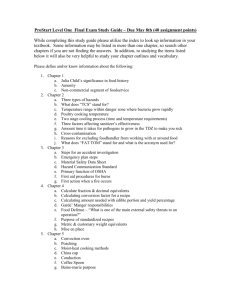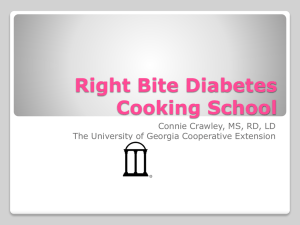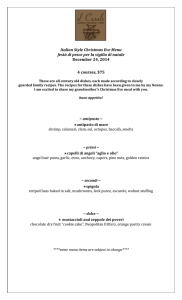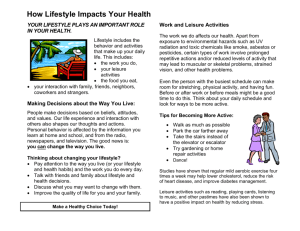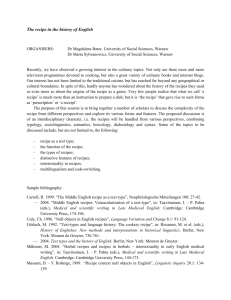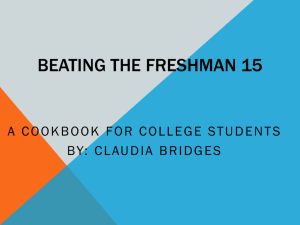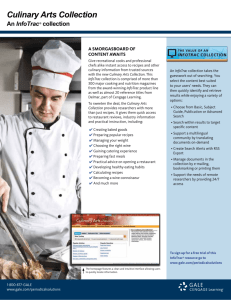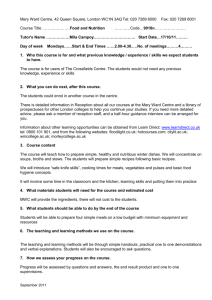Contents
advertisement
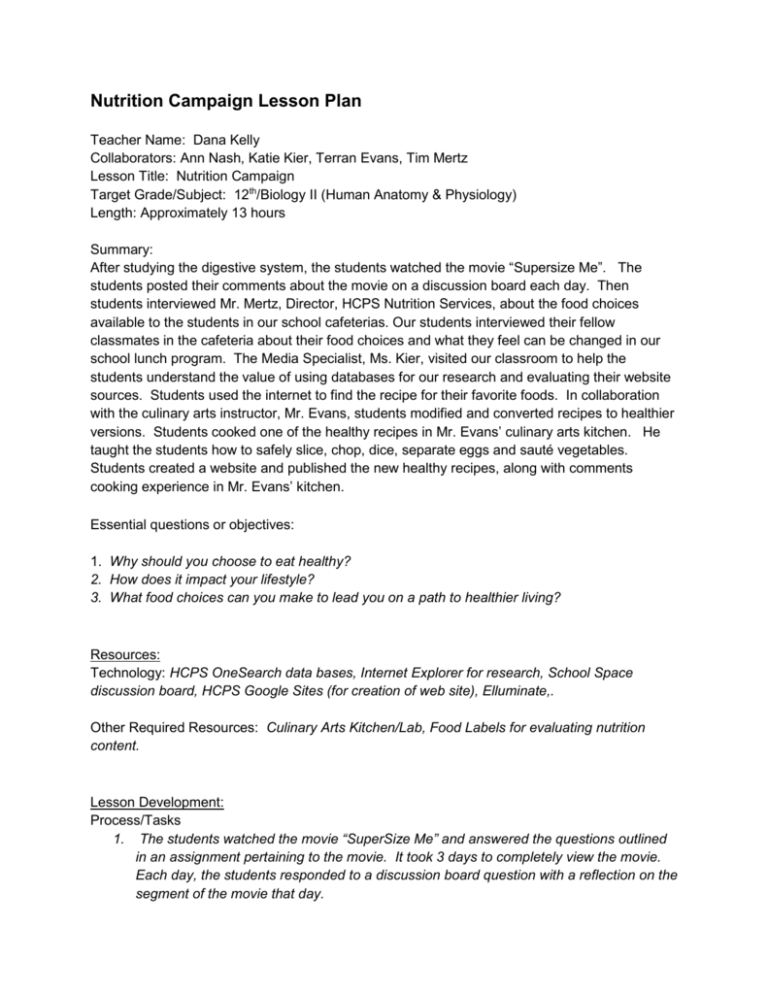
Nutrition Campaign Lesson Plan Teacher Name: Dana Kelly Collaborators: Ann Nash, Katie Kier, Terran Evans, Tim Mertz Lesson Title: Nutrition Campaign Target Grade/Subject: 12th/Biology II (Human Anatomy & Physiology) Length: Approximately 13 hours Summary: After studying the digestive system, the students watched the movie “Supersize Me”. The students posted their comments about the movie on a discussion board each day. Then students interviewed Mr. Mertz, Director, HCPS Nutrition Services, about the food choices available to the students in our school cafeterias. Our students interviewed their fellow classmates in the cafeteria about their food choices and what they feel can be changed in our school lunch program. The Media Specialist, Ms. Kier, visited our classroom to help the students understand the value of using databases for our research and evaluating their website sources. Students used the internet to find the recipe for their favorite foods. In collaboration with the culinary arts instructor, Mr. Evans, students modified and converted recipes to healthier versions. Students cooked one of the healthy recipes in Mr. Evans’ culinary arts kitchen. He taught the students how to safely slice, chop, dice, separate eggs and sauté vegetables. Students created a website and published the new healthy recipes, along with comments cooking experience in Mr. Evans’ kitchen. Essential questions or objectives: 1. Why should you choose to eat healthy? 2. How does it impact your lifestyle? 3. What food choices can you make to lead you on a path to healthier living? Resources: Technology: HCPS OneSearch data bases, Internet Explorer for research, School Space discussion board, HCPS Google Sites (for creation of web site), Elluminate,. Other Required Resources: Culinary Arts Kitchen/Lab, Food Labels for evaluating nutrition content. Lesson Development: Process/Tasks 1. The students watched the movie “SuperSize Me” and answered the questions outlined in an assignment pertaining to the movie. It took 3 days to completely view the movie. Each day, the students responded to a discussion board question with a reflection on the segment of the movie that day. 2. Our school librarian, Katie Kier, visited the classrooms and discussed evaluating websites for authenticity. She introduced the students to HCPS OneSearch databases so the students would have access to a variety of resources for their research about nutrition and recipes. 3. Students interviewed Mr. Mertz from HCPS Nutrition Services. Each student had a list of their own questions to ask about the quality/quantity of foods served in our school cafeterias. He answered all questions and helped students understand that the recent changes made by Nutrition Services in the school cafeterias were helping students learn to make healthy nutritional choices. 4. Students interviewed their fellow students in the cafeteria about the food choices they selected from the cafeteria line. The students generated a list of same questions to be asked by the interviewers. The students then compiled all answers to determine the consensus from the general student population. 5. Students then searched the internet for their favorite recipes to convert to healthier versions using the various search methods the media specialist taught. They were required to find 4 recipes: one each for breakfast, lunch, dinner and dessert. 6. Students submitted their favorite recipes to our culinary arts teacher, Mr. Evans. He reviewed the recipes in advance and through Elluminate, he helped the students evaluate their recipes and explained how to convert them to healthier versions by making simple changes to ingredients. The Elluminate session was recorded so that any absent students could review the session at a later time. 7. Students made conversions to the remaining recipes and as a group they submitted the top 5 favorites to Mr. Evans. He chose one recipe for students to create in his culinary kitchen – the Tortilla Omelet. Mr. Evans taught the students how to safely slice, dice, chop and sauté onions, peppers, mushrooms and parsley. He also taught them how to separate eggs for healthier cooking with egg whites. Students used low fat cheeses and sour cream and were then able to eat their delicious creation. Each student picked a favorite recipe which they converted and posted it to the website. Students posted comments about their cooking experience in the kitchen with Mr. Evans. Evaluation Procedure: Assessment of objectives: (Include a description of the student activity or artifact that you, as the teacher, will collect as evidence of content/skill mastery. State how you plan to communicate your assessment expectations to the students.) 1. Supersize Me Movie Question/Answer sheet – Teacher-created 27 questions answered over the course of 3 days of movie-viewing. Student were required to accurately complete of all questions to determine their score. 2. Participation in discussion board – A discussion board question posted daily by the teacher in reference to the content of the movie viewed that day. Students were responsible for posting their reaction to the daily post, along with responding to fellow classmate’s posts. 3. Questions for Guest Speaker Mr. Mertz – Student generated questions for the guest speaker. Students were required to create at least 3 questions to ask Mr. Mertz during the interview related to healthy eating and school nutrition. 4. Nutrition questions – 10 teacher-created questions related to various nutritional topics. Students are required to discover the answers through the appropriate means using the internet and databases. Students were graded based on completion and accuracy of information. 5. Internet research for 4 recipes – Submit 4 recipes. Students were required to submit four recipes for conversion. One recipe for each category of breakfast, lunch, dinner and dessert. Students were graded on submission in each category by the end of the second day of research. 6. Recipe revision – Submit revised recipes. Students were required to use suggestions from the culinary arts expert as well as information found from their research online to transform their recipes. Students were graded based on appropriate changes to the original recipe. 7. Food label evaluation – In class activity to learn to read food labels. Students were required to bring in a food label from a food that they typically consume to evaluate for nutritional content. Grade is based on completion and accuracy of label-reading. 8. Participation in student interviews in cafeteria – Students compile questions to ask their fellow peers about their food choices during lunch in the cafeteria. Students visited the school lunchroom to interview 3 students each using the questions created. All answers were submitted to the teacher. Through discussions about the answers, students recognized patterns in food choices and nutritional decisions. 9. Cooking with Mr. Evans – Students experienced cooking one of their healthy recipes with the culinary arts expert. He instructed students in food handling safety, food preparation safety and basic cooking techniques. Students were graded on participation and following instruction from the culinary arts expert.
